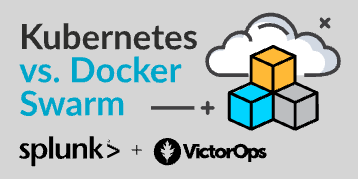

- #DOCKER SWARM VS KUBERNETES INSTALL#
- #DOCKER SWARM VS KUBERNETES UPDATE#
- #DOCKER SWARM VS KUBERNETES WINDOWS 10#
- #DOCKER SWARM VS KUBERNETES FREE#
Swarm Manager Security Group (Inbound Rules): TYPE Below are the specific settings: SHOW AWS security group settings You should use the AWS Security Group (or equivalent from other Clouds) for easy setup and management. You also need to set the relevant ports so the Swarm nodes can communicate with each other and allow traffic to your app. On top of that, if you count the Traefik stack, you probably don’t have enough remaining memory for the additional services. My experience is that ShinyProxy uses about 200-300 MiB of memory and the demo Shiny app uses about 100 MiB. Swarmpit, Grafana, etc.) mentioned later in this tutorial. t3a.small) if you also want to try out the monitoring/managing tools (e.g.

However, I’d recommend you go for something with 2 GiB of memory (e.g.
#DOCKER SWARM VS KUBERNETES FREE#
If you have an AWS Free Tier account, a free t2.micro instance would be fine. Ubuntu Server 18.04 LTS LTS (although other versions may also work).In order to go through the tutorial, you need at least one server with the following specs: This is not an issue with Traefik, which allows you to use Docker labels to manage configs. Nginx settings can end up in huge config maps that are hard to read and manage. This is mainly due to the ease of set up. Securing and monitoring ShinyProxy deployment of R Shiny apps, you may wonder why I switched away from Nginx to Traefik. This means you can have your app running in hours rather than days! Traefik vs Nginx However, I’d still argue that Docker Swarm is adequate for 80% of the use cases and way much easier to set up. Plus, many vendors adopt the ‘Kubernetes first’ support strategy and some clouds even manage/deploy Kubernetes for you. It covers almost all the use cases and can be more flexible than Docker Swarm. In terms of container orchestration tools, Kubernetes is more popular. Finally, if you are already using docker-compose.yml file, it is just a couple tweaks away to make it Docker Swarm friendly!.
#DOCKER SWARM VS KUBERNETES UPDATE#
#DOCKER SWARM VS KUBERNETES INSTALL#
#DOCKER SWARM VS KUBERNETES WINDOWS 10#
If you are not familiar with ShinyProxy and wonder why you should use it over the other options, I have written another post titledĭeploying R Shiny apps using ShinyProxy on Windows 10 that explains it in more detail. In this post, we will build a scalable, production-grade Shiny app powered by ShinyProxy and Docker Swarm and use Traefik to handle the SSL certificate (which gives you the little padlock in front of your domain name), reverse proxy (for routing traffic from the 80 and 443 ports to your Shiny app and other places if needed) and load balancing. You can probably go through the following tutorial in half an hour. Don’t worry, this is just the thing you need and I promise nothing below is too complicated. If you search for R Shiny apps deployment and landed on this post, chances are you are like me - a data scientist who just want to build a decent app to host a dashboard or a prediction model without going down to the rabbit hole of DevOps or the frontend/backend development.


 0 kommentar(er)
0 kommentar(er)
